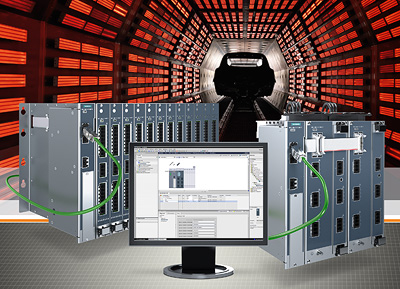Easy integration of industrial heating processes into automated systems

New heating control systems from Siemens switch and control heating panels and elements in industrial applications: Siplus HCS4200 is suitable for 230 V networks, Siplus HCS4300 for 400 V/480 V networks.
Built to a modular, compact and space-saving design, these distributed I/O systems can be adapted to specific applications. Heating control systems from Siemens can be found in a range of sectors and applications all over the world, drying paint and coatings, for example, in the molding of plastics and lightweight construction materials, in plastic welding and in film extrusion.
The new heating control systems promise to help plant operators cut their energy consumption by facilitating energy-efficient heating element actuation and avoiding current spikes in the network.
Thanks to their modular structure and integral functions, the new Siplus HCS heating control systems require up to 80 percent less space in the cabinet than conventional heating solutions with separate components and are considerably easier to wire up too.
The Siplus HCS heating control systems integrate components including switching elements and fuses as well as functions such as Profinet communication, actuation mechanisms and extensive, detailed diagnostics in one compact device. The new product lines improve the heating process and help to reduce downtime and avoid outages.
The comprehensive and detailed diagnostic functions in the heating control systems, for example, help users to detect and localize problems in the heating process – which heat source has failed, perhaps, or which incoming or outgoing fuse has tripped – quickly. The diagnostic data is reported to the central system controller via Profinet.
The heating control units are readily integrated into the automation system with, for example, HMI(Human Machine Interface) devices, controllers and motion control components via the TIA (Totally Integrated Automation) Portal engineering framework.
All automation devices are processed in a single project in the engineering process. The TIA Portal includes a thermographic library for the WinCC advanced Scada (Supervisory Control and Data Acquisition) system that makes it quick and convenient for users to visualize heating panels and connect them to the operating, machine and process workflows.
For further information see www.siemens.com/siplus-hcs
Siemens AG (Berlin and Munich) is a global technology powerhouse that has stood for engineering excellence, innovation, quality, reliability and internationality for more than 165 years. The company is active in more than 200 countries, focusing on the areas of electrification, automation and digitalization. One of the world's largest producers of energy-efficient, resource-saving technologies, Siemens is No. 1 in offshore wind turbine construction, a leading supplier of combined cycle turbines for power generation, a major provider of power transmission solutions and a pioneer in infrastructure solutions as well as automation, drive and software solutions for industry. The company is also a leading provider of medical imaging equipment – such as computed tomography and magnetic resonance imaging systems – and a leader in laboratory diagnostics as well as clinical IT. In fiscal 2014, which ended on September 30, 2014, Siemens generated revenue from continuing operations of €71.9 billion and net income of €5.5 billion. At the end of September 2014, the company had around 357,000 employees worldwide.
Further information is available on the Internet at www.siemens.com
Reference Number: PR2014110056DFEN
Contact
Mr. Gerhard Stauss
Digital Factory Division
Siemens AG
Gleiwitzer Str. 555
90475 Nuremberg
Germany
Tel: +49 (911) 895-7945
gerhard.stauss@siemens.com
Media Contact
All latest news from the category: Trade Fair News
Newest articles

Parallel Paths: Understanding Malaria Resistance in Chimpanzees and Humans
The closest relatives of humans adapt genetically to habitats and infections Survival of the Fittest: Genetic Adaptations Uncovered in Chimpanzees Görlitz, 10.01.2025. Chimpanzees have genetic adaptations that help them survive…

You are What You Eat—Stanford Study Links Fiber to Anti-Cancer Gene Modulation
The Fiber Gap: A Growing Concern in American Diets Fiber is well known to be an important part of a healthy diet, yet less than 10% of Americans eat the minimum recommended…

Trust Your Gut—RNA-Protein Discovery for Better Immunity
HIRI researchers uncover control mechanisms of polysaccharide utilization in Bacteroides thetaiotaomicron. Researchers at the Helmholtz Institute for RNA-based Infection Research (HIRI) and the Julius-Maximilians-Universität (JMU) in Würzburg have identified a…



